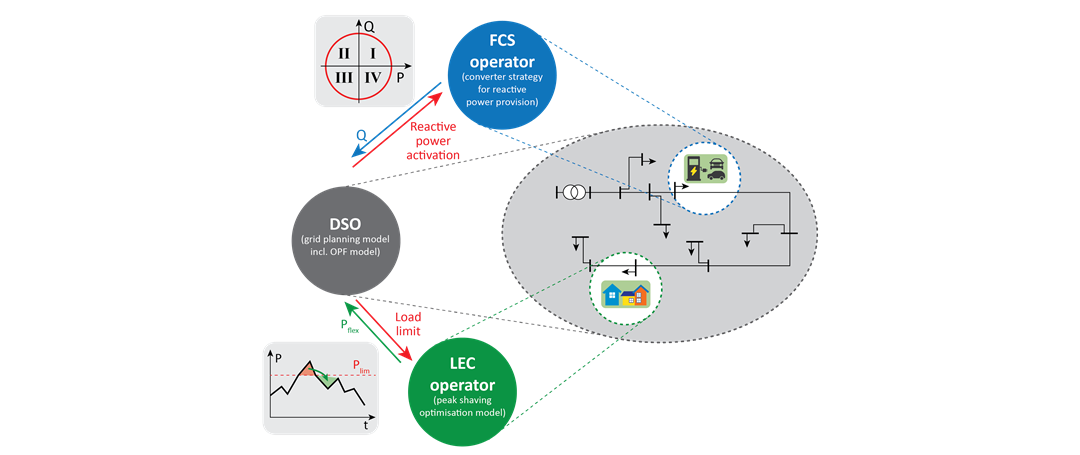FINE – Flexible Integration of Local Energy Communities
Future-oriented grid planning with Local Energy Communities

Flexibility from LECs includes load curtailment, load reduction, utilising battery storage, etc.
However, utilising flexibility from LECs also creates new challenges for grid planners, as they need to account for the costs and benefits of these measures in their grid planning studies. For each type of flexibility measure, their operational characteristics need to be represented in a way that strikes a reasonable compromise between accuracy and complexity for planning purposes.
Existing grid planning practices are to a very limited degree able to account for active measures, such as planning for the utilisation of flexibility resources. Moreover, the majority of grid companies lack the resources and knowledge to simultaneously simulate and solve the planning and operational optimisation problem for large-scale grid models.
In the project FINE, we are developing a tool that considers flexibility from LECs and plans network capacity requirements based on technical constraints and socio-economic costs.
With the proposed tool, the positive impact of flexibility from LECs on grid investment and grid development plans can be investigated. The methodology integrates operational and investment planning models in a way that makes it practicable for DSOs to compare the cost-effectiveness of different flexibility measures from LECs.